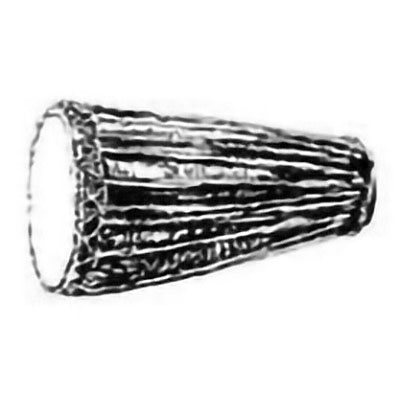taigu overview
 Lifting the drum (pinyin: Tái gǔ), also known as the water drum. The Dai and De'ang people play musical instruments that strike the membrane. The Dai language in the Dehong area is called Meizangga. It is called Gelendang in De'ang language, which means big drum. It is popular in Dehong Dai and Jingpo Autonomous Prefecture and Baoshan area of Yunnan Province. It has a long history. As early as more than 500 years ago, the Dai and De'ang people have spread this kind of drum among the people. Li Sicong's "Bai Yi Zhuan" in the Ming Dynasty contained: "When feasting in the countryside, he beat drums, played reeds, and danced (shield) boards for fun". It shows that it is widely used in grand festivals and folk entertainment occasions. For hundreds of years, the big drum has been popular in Dai Township.
Lifting the drum (pinyin: Tái gǔ), also known as the water drum. The Dai and De'ang people play musical instruments that strike the membrane. The Dai language in the Dehong area is called Meizangga. It is called Gelendang in De'ang language, which means big drum. It is popular in Dehong Dai and Jingpo Autonomous Prefecture and Baoshan area of Yunnan Province. It has a long history. As early as more than 500 years ago, the Dai and De'ang people have spread this kind of drum among the people. Li Sicong's "Bai Yi Zhuan" in the Ming Dynasty contained: "When feasting in the countryside, he beat drums, played reeds, and danced (shield) boards for fun". It shows that it is widely used in grand festivals and folk entertainment occasions. For hundreds of years, the big drum has been popular in Dai Township.It is made by hollowing out the large trunks of local sycamore trees, mango trees or toon trees. The shape is similar to that of a water tank. One end is large and one end is small, and both sides are covered with cowhide, suede or other animal skins. The size of the drum body varies, and the specifications and dimensions are not fixed. Generally, the total length is 100 cm to 120 cm. The diameter of the drum surface at the large end is 50 cm to 60 cm, and the diameter of the drum surface at the small end is 25 cm to 30 cm. On the iron ring larger than the drum mouth, and then cover the drum mouths at both ends, tighten it with cowhide strips, and adjust the tension of the drum head (picture). The internal structure of the drum is special, and it is dug into two drum shells that can communicate with each other in the middle, so it can produce a good sound resonance effect and have a long reverberation. There is also a circular hole with a diameter of 3 cm to 5 cm on one side of the middle part of the drum body. In the Dai area of Longchuan, the drum is usually soaked in water, and the drum is picked up before use, and the water in the drum cavity is poured out from the round hole; in the De'ang area of Longchuan, the drum is not soaked in water It is usually placed in Theravada Buddhist monasteries, but before use, a certain amount of water or wine should be poured into the drum to moisten the drum body to obtain a better sound effect, so it is called a water drum.
When playing the lifting drum, it varies according to the size of the drum body. For the smaller drums, a young and strong man will carry the drums alone, and the two of them will dance while playing; the larger drums will be carried by two people with long bamboo poles. The drum is in front, and then one person holds a wooden drum in each hand to hit the thick-end drum face, and dances while beating, and everyone dances to the music. It is probably named after the drum! Due to the different heights at both ends of the drum and the changeable rhythm, the drum sound is sometimes heavy and sometimes light, and the timbre is colorful.
Drums are mostly played on courtyard dams, often with one or two drums as the core, surrounded by more than a dozen elephant-foot drums, each of which is accompanied by a cymbal and a pair of cymbals. With such a huge accompaniment band, hundreds of dancers, and a spectacular scene, this is the "Gong Mu Pendulum" event held every year on the 14th and 15th of the first lunar month. The mood is warm, full of joy and happiness. In the interval between music and dance, young boys and girls will form a circle and sing a folk song praising a better life, expressing their yearning for the future.
- Pinyin:Tái gǔ
- nickname:water drum
- Classification:slamming membrane musical instrument
overview of other similar instruments
- sanyanxiao overview
- Daguangxian overview
- Leiqin overview
- hahao overview
- yandundagu overview
- Han Xiaozheng overview
- Fang Xiang overview
- guanzi overview
- zhuqin (Dao Qin) overview
- zhuiqin overview
- bangzi overview
- three-stringed piano overview
- Gehu overview
- xiao overview
- xiaokonghou overview
- Konghou overview
- Sheng overview
- suona overview
- hulusi overview
- gushao overview
 渝公网安备 50010702504639号
渝公网安备 50010702504639号